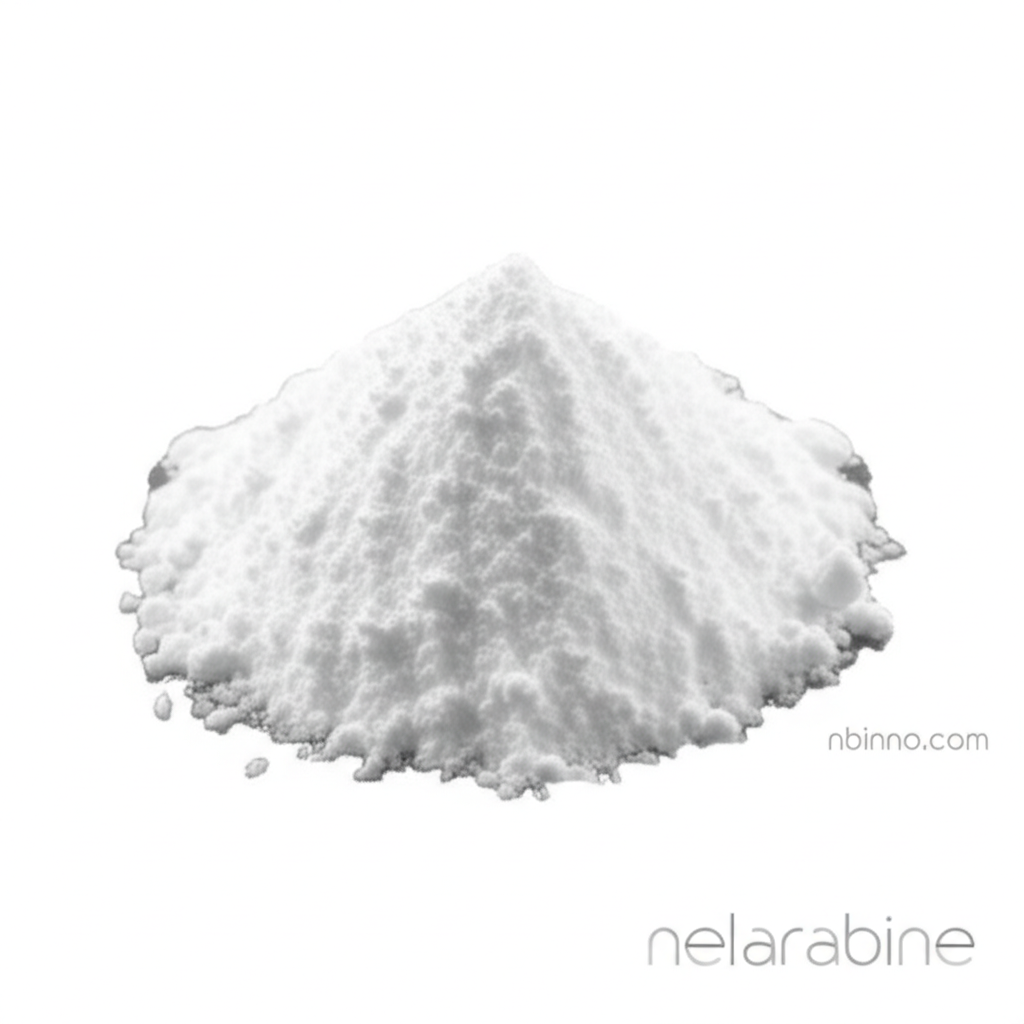Understanding Nelarabine: A Comprehensive Guide
Explore the chemistry, applications, and market significance of this vital oncology therapeutic agent.
Get a Quote & SampleProduct Core Value

Nelarabine
Nelarabine is a potent purine nucleoside analog widely recognized for its role as a cytotoxic agent in chemotherapy. It functions as a prodrug, being converted in the body to its active metabolite, arabinosyl-guanine (ara-G), which then gets phosphorylated to ara-GTP. This active form interferes with DNA synthesis, leading to cell cycle arrest and apoptosis, particularly in T-cells and malignant T-lymphoid cells.
- Leverage the power of purine nucleoside analog chemotherapy for T-cell acute lymphoblastic leukemia treatment.
- Understand the detailed mechanism of action of arabinosyl-guanine nucleotide triphosphate in inhibiting DNA synthesis.
- Discover the significance of Nelarabine CAS 121032-29-9 as a key pharmaceutical intermediate in oncology drug development.
- Explore the market for this crucial anticancer agent and its availability from reliable suppliers.
Key Advantages
Targeted Cytotoxicity
Experience targeted cytotoxicity with Nelarabine, which selectively accumulates in T-cells and malignant T-lymphoid cells, minimizing damage to healthy tissues, a crucial aspect of effective cancer treatment.
Mechanism of Action Clarity
Gain insights into the precise mechanism of action, involving inhibition of DNA synthesis and induction of apoptosis, essential for understanding its efficacy in T-cell malignancies.
Research & Development Utility
Utilize Nelarabine as a vital pharmaceutical intermediate for research and development in novel oncology drug discovery, offering a well-established compound for further therapeutic exploration.
Key Applications
T-cell Acute Lymphoblastic Leukemia Treatment
Nelarabine is a cornerstone treatment for T-cell acute lymphoblastic leukemia (T-ALL) that has not responded to or has relapsed following prior chemotherapy regimens.
T-cell Lymphoblastic Lymphoma Treatment
It is also approved for T-cell lymphoblastic lymphoma (T-LBL), providing a critical therapeutic option for patients with these aggressive hematologic malignancies.
Pharmaceutical Intermediate
As a key pharmaceutical intermediate, Nelarabine serves as a building block in the synthesis of other complex molecules or as a reference standard in drug development and quality control.
Oncology Research
Its well-defined mechanism makes it invaluable in preclinical research for understanding DNA synthesis inhibition, apoptosis pathways, and developing next-generation anticancer agents.
